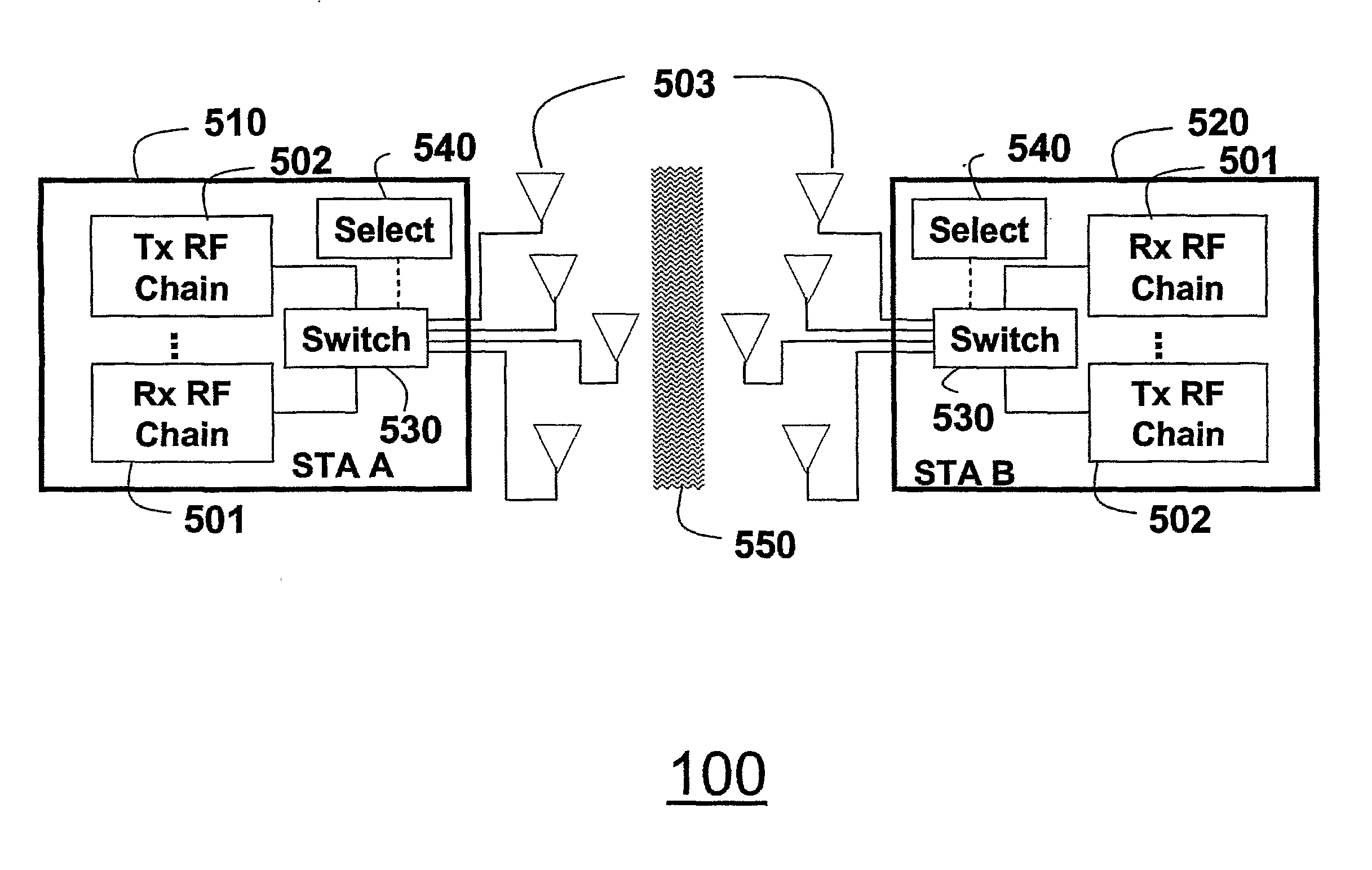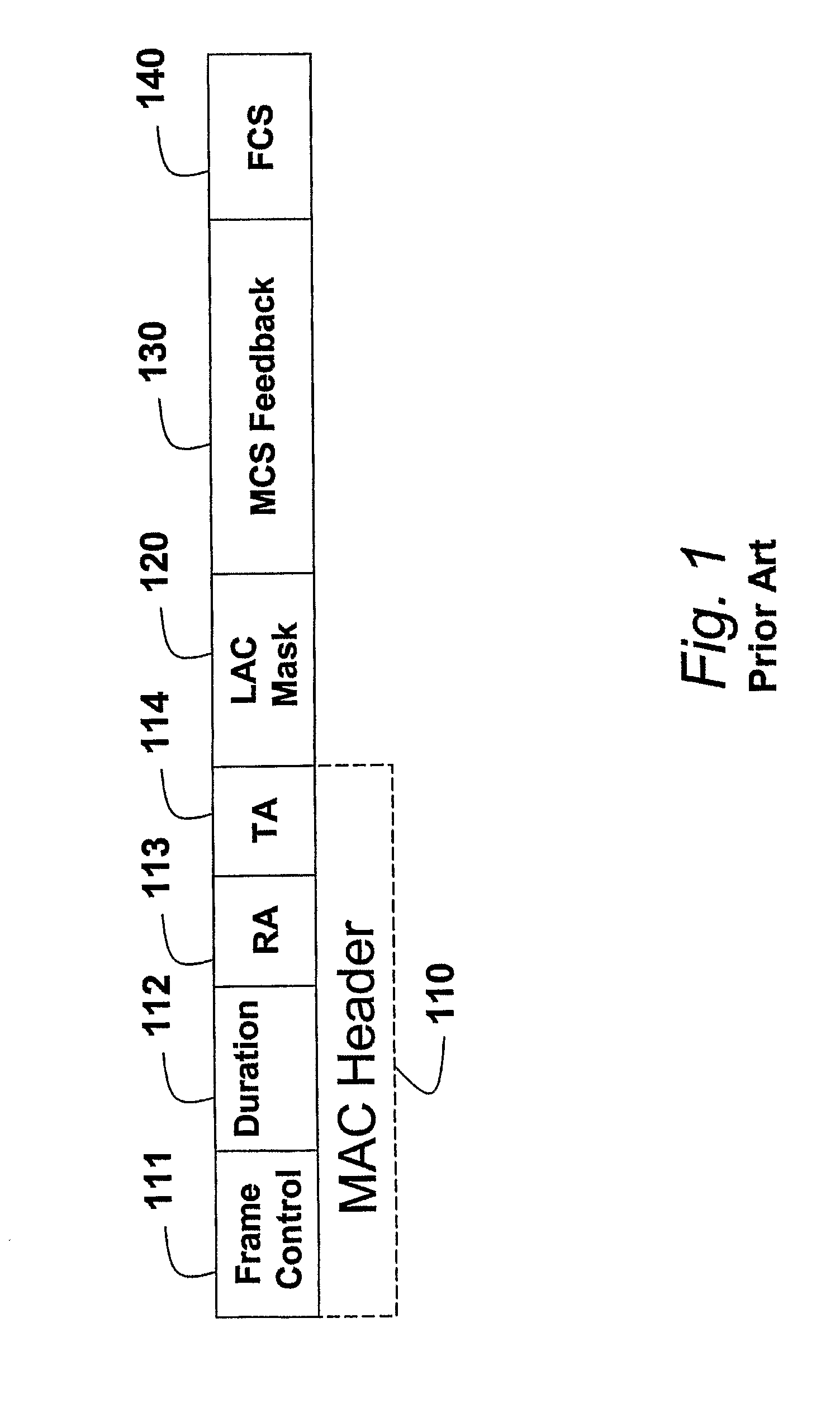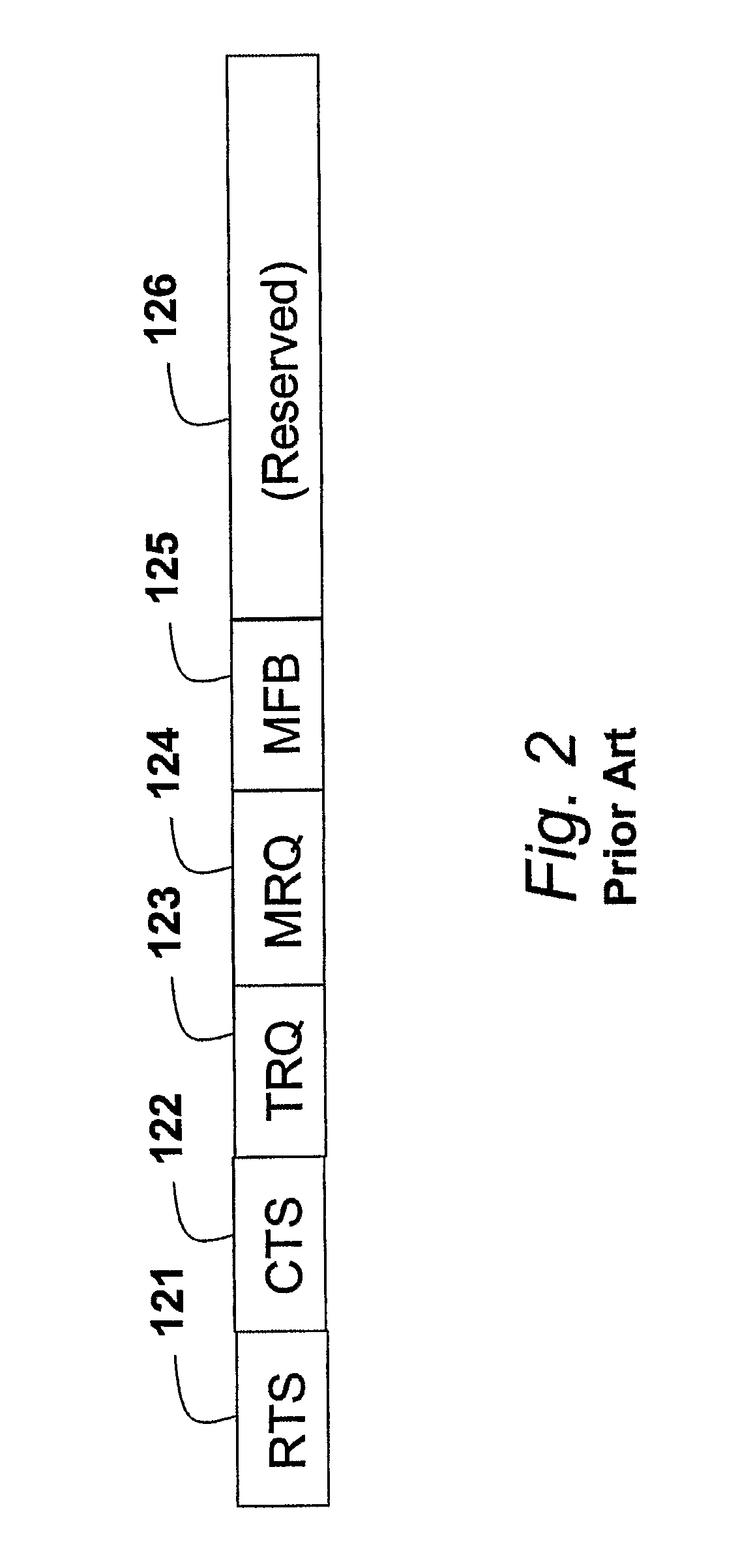Antenna/Beam Selection Training in MIMO Wireless LANs with Different Sounding Frames
a wireless lan and sounding frame technology, applied in the field of multi-input, multi-output wireless local area networks, can solve the problems of increasing hardware complexity and cost, increasing processing complexity at the baseband, and undesirable additional overheads
- Summary
- Abstract
- Description
- Claims
- Application Information
AI Technical Summary
Benefits of technology
Problems solved by technology
Method used
Image
Examples
Embodiment Construction
[0048]The invention provides a training method for selecting antennas / beams in a MIMO wireless local area network (WLAN). The method operates at the MAC layer. Compared with prior art antenna / beam selection training methods, the method according to the invention does not require a modification of the PHY layer.
[0049]The training method rapidly sends multiple training frames, designated as sounding packets. Each sounding packet conforms to a conventional PHY layer design and is for a different subset of all of the available antennas so that characteristics of the entire channel can be estimated by the receiver of the sounding packets. The receiver of the sounding packets can select either transmit or receive antennas. The entire training method operates at the MAC layer.
[0050]The sounding packets, in addition to estimating the MIMO channel for selecting antennas / beams, can also include data which makes the method extremely efficient because estimating and data transfer are performed ...
PUM
 Login to View More
Login to View More Abstract
Description
Claims
Application Information
 Login to View More
Login to View More - R&D
- Intellectual Property
- Life Sciences
- Materials
- Tech Scout
- Unparalleled Data Quality
- Higher Quality Content
- 60% Fewer Hallucinations
Browse by: Latest US Patents, China's latest patents, Technical Efficacy Thesaurus, Application Domain, Technology Topic, Popular Technical Reports.
© 2025 PatSnap. All rights reserved.Legal|Privacy policy|Modern Slavery Act Transparency Statement|Sitemap|About US| Contact US: help@patsnap.com



